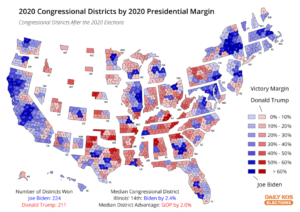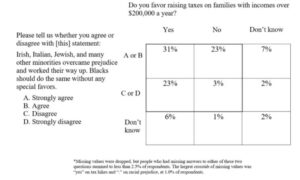Amidst all the Republican attacks on voting by mail, something else was going on, which I wrote about at New York:
Republican state legislatures across the country recently launched efforts to restricting voting by mail in myriad ways. It’s generally understood that they are reacting to Donald Trump’s bizarre but incessant claims that massive fraud associated with expanded mail ballots in 2020 robbed him of a “landslide” victory. That’s not, however, the only voter-suppression measures the GOP is pursuing in states where they control both the executive and legislative branches of government. They are also returning to their pre-2020 agenda of restricting in-person voting in ways that disproportionately affect Democratic-leaning constituencies.
That’s most evident in Georgia, where GOP legislators are considering crackdowns on early in-person voting, restricting weekend voting opportunities, banning mobile polling places, and invalidating provisional ballots cast in the wrong precinct. But it’s popped up also in Iowa, where Republicans have sent their GOP governor a bill cutting back on early voting and even closing the polls earlier on Election Day (Democrats traditionally vote later in the day than Republicans).
In both states, of course, these attacks on in-person voting are being combined with restrictions on voting by mail; one of the bills in Georgia would eliminate no-excuse absentee ballots — in effect since Republicans introduced it in 2005 — altogether. But there’s clearly a bait and switch going on, in which general-purpose attacks on the franchise, and particularly voting practices thought to benefit Democrats, are being hustled through even though they have nothing to do with the widespread Trumpian claims that liberalized voting by mail is a threat to election integrity.This reality creates a bit of a strategic problem for Democrats. Should they expend their energy defending expanded (or even universal) voting-by-mail opportunities to the last ditch just because Trump chose to demonize the practice in one election cycle? In the past, after all, voting by mail was actually thought to favor Republicans in many states. Emory political scientist Alan Abramowitz has just published an analysis concluding that expanded voting by mail didn’t have much to do with Joe Biden’s victory, even in the pandemic-distorted atmosphere of 2020.
Certainly in many parts of the country — including Georgia — early in-person voting has been the favorite balloting method for Democratic-leaning minority voters. It was no accident that an early version of one of the Georgia bills banned in-person voting on Sundays altogether, which was a direct attack on “Souls to the Polls” — post-worship-service voter-mobilization drives undertaken by many Black churches (the provision was struck, as it sounds both racist and anti-religious, though it was replaced with restrictions on how many weekend days were available for early in-person voting).
We’ll never know why Trump spent so much time attacking voting by mail in 2020, absent any clear evidence it would benefit his opponent. My own guess is that all along he contemplated the “red mirage” strategy of claiming victory based on early returns and either stopping or delegitimizing mail ballots counted later — a strategy that depended on convincing his own supporters to vote in person, which they obediently did, relatively speaking. That he failed to competently pull it off is no evidence that this was not the plan. But in any event, absent an extended or future pandemic, unrestricted or positively encouraged voting by mail may not be as fundamentally essential to voting rights as it appeared to be when Trump and his allies were assailing it every day. At a minimum, voting-rights advocates should be vigilant about a return to systemic voter suppression aimed at other — or all — methods of balloting.










